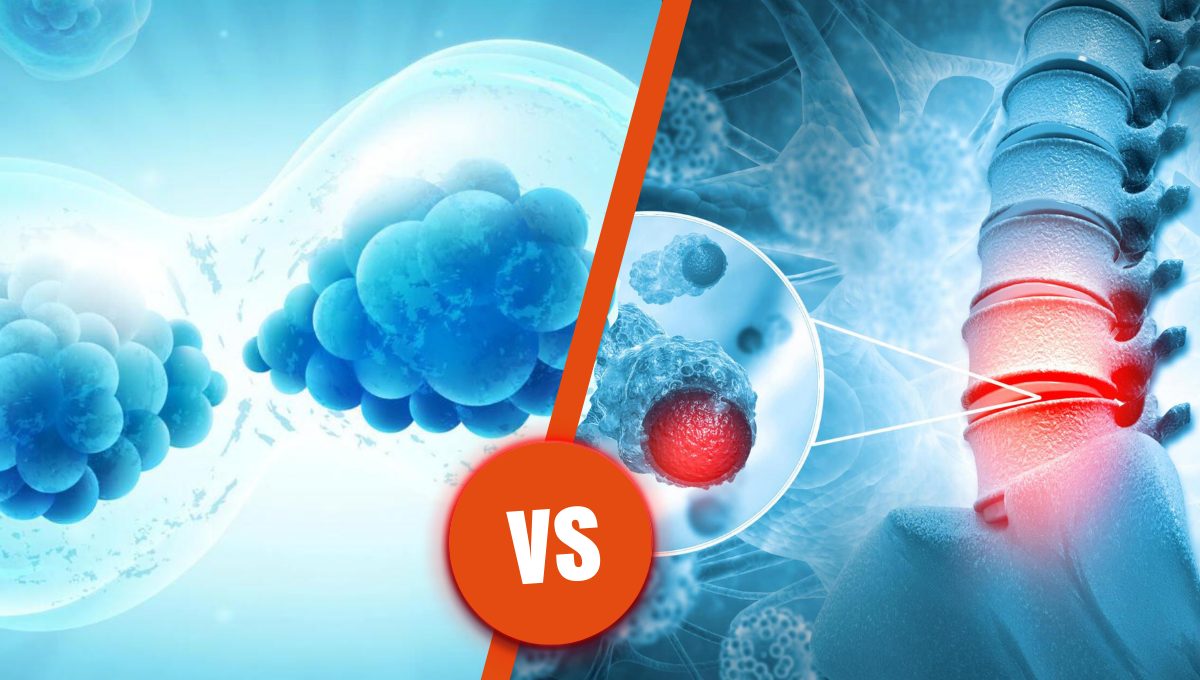- Home
- About Us
- Book Appointment
- Treatments
- Alzheimer’s Disease
- Anti-Aging
- Autism
- Autoimmune Disorders
- Back Pain
- COPD
- Crohns Disease And Ulcerative Colitis
- Erectile dysfunction and Penis enlargement
- Fibromyalgia
- Hip Pain
- Knee Pain
- Lupus
- Lyme Disease
- Multiple Sclerosis
- Muscular dystrophy
- Parkinsons Disease
- Peripheral And Diabetic Neuropathy
- Post Cancer Treatments
- Post Stroke Recovery
- Psoriasis
- Rheumatoid Arthritis
- Shoulder Pain
- Join The Club
- Aesthetics
- Blog
- Contact Us
Spinal cord injuries (SCI) inflict devastation, leading individuals grappling with a lifetime of challenges. It is a severe condition that can result in neurological impairments and lifelong disability. Damage to the spinal cord imposes extensive physical, psychological, and financial burdens on the patients and their families.
Although there are some existing treatments, most fall short of permanent recovery. The limitations in the traditional treatment approaches have prompted the urgent need for innovative therapeutic solutions, like stem cell treatment. It has emerged as a promising treatment facilitating the regeneration and healing of damaged neural tissues following spinal cord injuries.
This article comprehensively discusses the potential of stem cell therapy for spinal cord injuries. It provides an in-depth explanation of the unique advantages and effective outcomes of cell-based therapy.
Spinal Cord Injury – Overview
Spinal cord injury is a debilitating neurological condition that imposes significant health challenges or impairments such as immobility, autonomic dysfunction, and constant pain. In most cases, the primary damage to the spinal cord is initiated by singular traumatic events like car accidents or sports injuries, causing tears, lacerations, or compression of the spinal cord. As a result of this initial damage, a series of secondary injury mechanisms triggers, leading to ischemic strokes, inflammation, and substantial tissue loss.
Difficulty in walking, inability to move arms or legs, lack of control of bladder or bowel movements, loss of fertility, inflated reflex actions, or seizures, weakness of muscles, loss of sensations, pain in back and neck, and headache are the common symptoms that most patients experience over time after the injury.
Read Also: Stem Cell Therapy: Ischemic Stroke Recovery Breakthrough
Types of Spinal Cord Damages
Navigating the complexities of a devastating condition like spinal cord injury and understanding its different types is helpful for doctors to identify the exact cause and plan a personalized stem cell treatment. Here’s a breakdown of the two major types of SCIs.
Complete Spinal Cord Injury – In this type, the spinal cord is completely damaged, resulting in loss of communication between the brain and the part of the body below the injury. Complete SCI often results in paralysis and loss of sensation below the injury level. However, with advancements in medical treatments like stem cell therapy, it is now possible to regain mobility and cell communication.
Partial Spinal Cord Injury – The spinal cord is partially damaged or affected, and the loss of function and body mobility depends on the severity and location of the injury. In this case, some communication remains between the brain and the part of the body below the injury.
Promise Of Stem Cell Therapy To Treat Spinal Cord Injury
Stem cell therapy has revolutionized spinal cord injury treatment, offering a ray of hope and optimism to those suffering from this chronic condition. The past decade has witnessed breakthrough moments in the field of SCI treatment with the successful trials and demonstration of stem cell therapy’s feasibility and long-term safety.
Stem cell intervention is a trailblazing achievement, laying the foundation for further medical research and advancements, focusing on enhancing the therapeutic potential of this promising treatment. The regenerative properties of stem cells lead to neural regeneration and reducing lesions, improving locomotion and lowering inflammation.
The administration of stem cells after spinal cord injury exerts neuroprotective effects and regulates brain-derived neurotrophic factors in the spinal cord. Stem cell treatment for spinal cord injury focuses on replacing the damaged cells and promoting axonal growth. After the stem cells are introduced into the body, they migrate to the injured site to start the repair process. These newly introduced stem cells stimulate angiogenesis ( growth of blood vessels) and release trophic factors to prevent further neuronal degeneration in the affected areas in the spinal cord.
Renowned stem cell specialists at Life Altering Stem Cell Therapy Institute treat spinal cord injury with stem cells within six months of injuries, minimizing the risk of inflammation and loss of motor and sensory functions. Being Mexico’s regenerative medicine center, our institute facilitates state-of-the-art treatment facilities and innovative stem cell technologies to enhance the therapeutic efficacy of the treatments.
Advantages of Stem Cell Therapy For Spinal Cord Damage
Several types of stem cells are used in the SCI treatment, including induced pluripotent stem cells and mesenchymal stem cells derived from bone marrow, adipose tissue, or the umbilical cord. Stem cells isolated from the human umbilical cord tissues are proven to be highly effective in SCI treatment.
- They form healthy neural cells with high differentiation potential, replacing lost neurons and promoting remyelination of damaged axons.
- The immunomodulatory and anti-inflammatory properties of stem cells modulate the immune system response and reduce pain in the back.
- By promoting axonal growth and regeneration, stem cell therapy aids functional recovery and restores locomotion.
- Using the human umbilical cord tissue-derived mesenchymal stem cells ensures no chance of cell rejection.
- Stem cell therapy is a minimally invasive procedure with no complications or side effects.
- The duration of the treatment, as well as the recovery period, is shorter compared to conventional treatment approaches.
Changes Noticed In Patients After Stem Cell Treatment
The advancement of cell-based therapy for spinal cord injuries has dramatically altered the perception that individuals suffering from such injuries are destined to live a bedridden life. Stem cell treatment for spinal cord injury has significantly enhanced the patient’s quality of life.
- Improved physical mobility
- Improvement in walking and sitting
- Increased control of bladder and bowel movements
- Better body balance while standing and sitting
- Improved trunk control (upper body)
- Improved libido and fertility
- Reduced headache
- Decreased pain in the back and neck
- Reduced spasms and signs of shock
- Improved sensation
Why Choose Life Altering Stem Cell Therapy Institute For Spinal Cord Injury Treatment
Mexico is the leading destination for stem cell therapy because of its advanced treatment approaches, highly qualified medical professionals, and exceptional medical infrastructure. If you are looking for a trusted best stem cell clinic in Mexico, Life Altering Stem Cell Therapy Institute is a name you can always count on.
We have an excellent track record of successful therapies given to patients to recover from spinal cord injuries. We have a well-versed medical team comprising top physicians, stem cell specialists, and medical coordinators. They keep themselves updated with the latest medical news, clinical trials, and research on stem cells and their applications in SCI treatment. With highly advanced treatment solutions and class-apart clinic facilities, the Life Altering Stem Cell Therapy Institute offers renewed hope for enhanced quality of life and functional recovery for individuals with SCI.
Conclusion
In summary, stem cell treatment offers an innovative approach to spinal cord injury treatment, addressing its various aspects and promoting significant motor functional recovery. With more ongoing research and progress in regenerative medicine, the new and complete therapeutic potential of cell-based treatment for spinal cord injuries will soon be discovered.
Most importantly, the use of stem cells in SCI aims to address the challenges faced by patients by revolutionizing damaged tissue repair and regeneration in the spinal cord. Get stem cell treatment in Mexico for spinal cord injury at our institute to significantly impact your life and lead a healthier and pain-free future.




